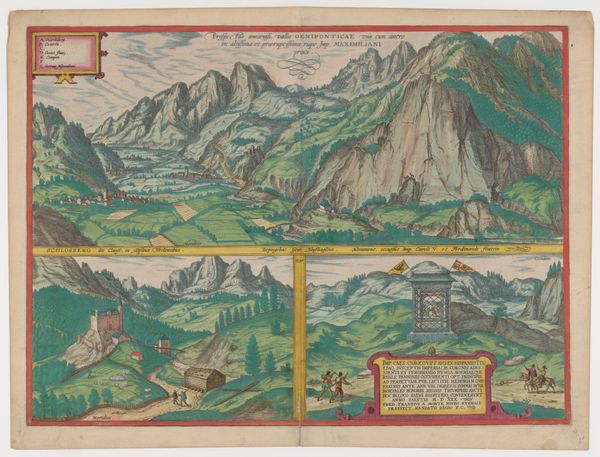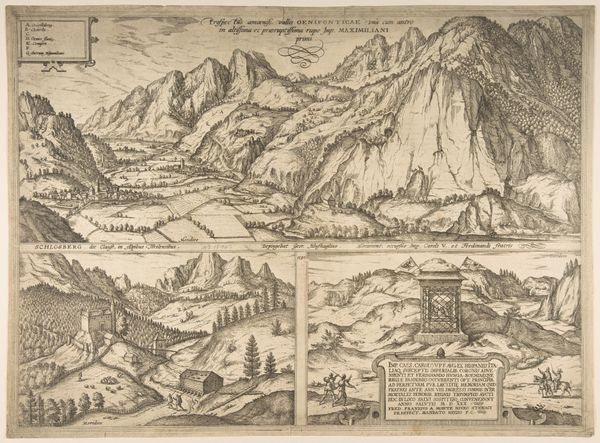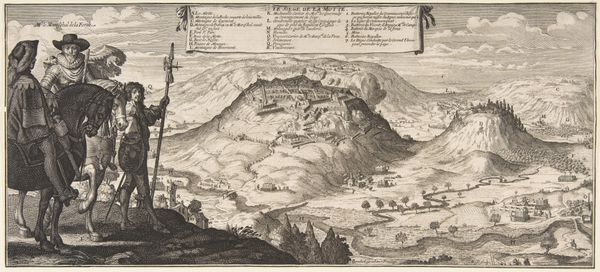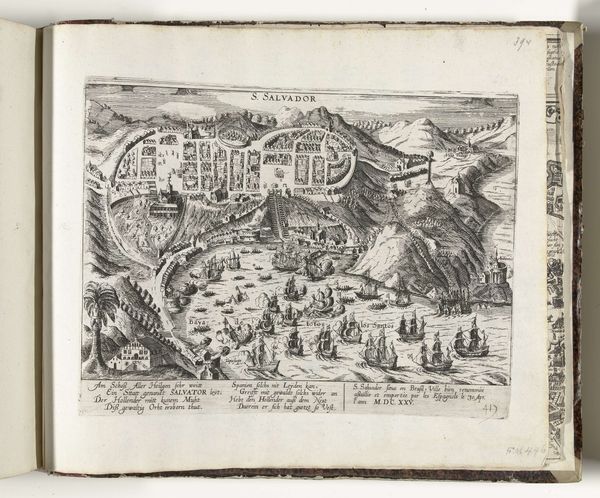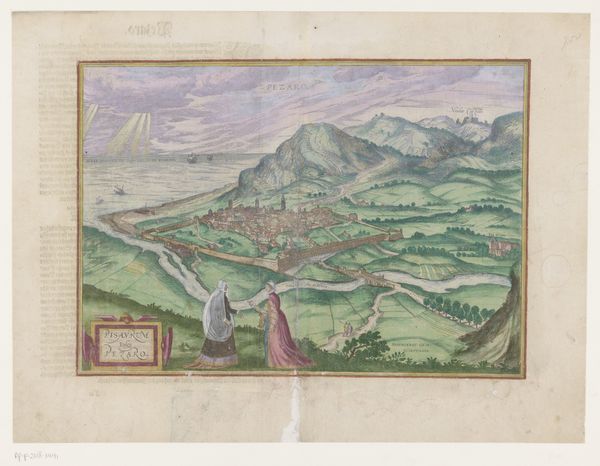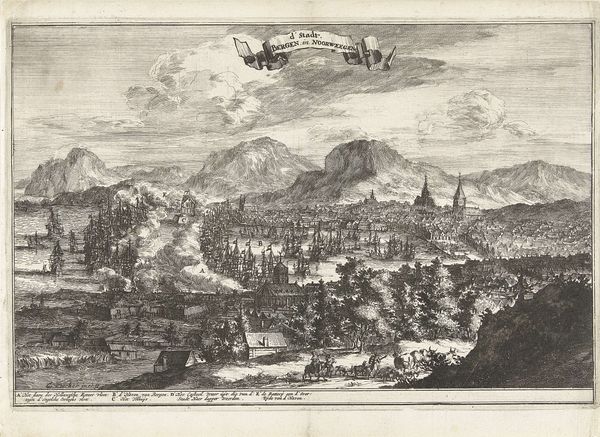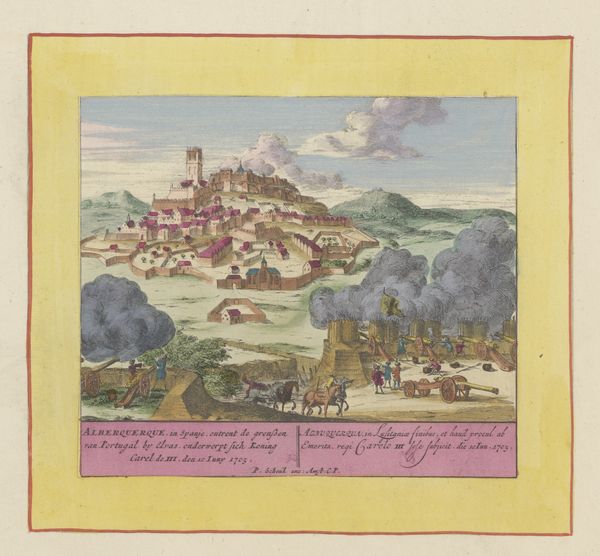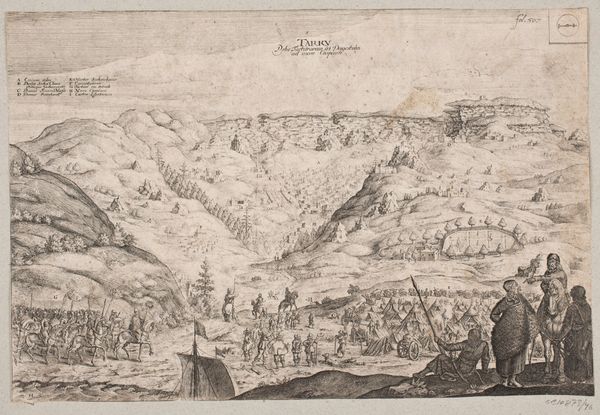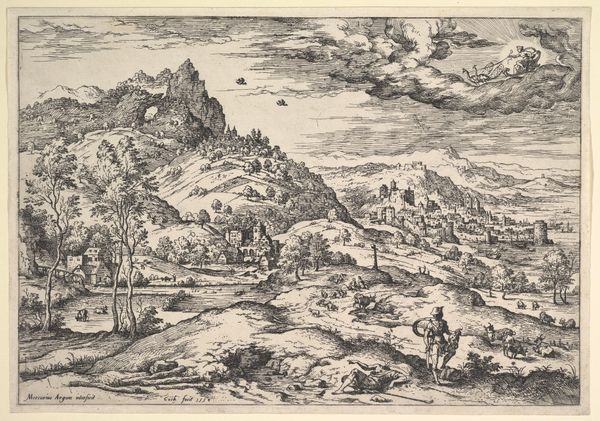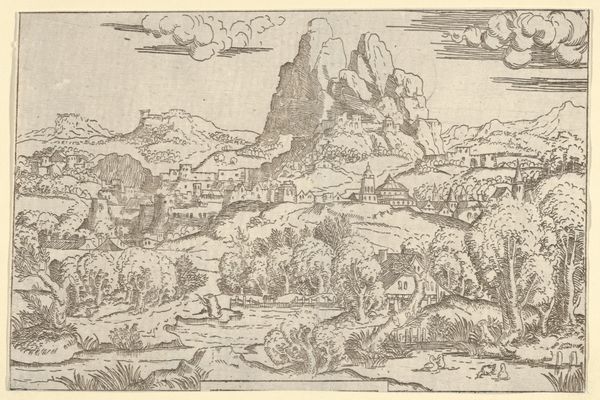
Drie gezichten in en rond het dal van de Inn in Oostenrijk, met de Alpen op de achtergond 1590
0:00
0:00
drawing, coloured-pencil, print, engraving
#
drawing
#
coloured-pencil
# print
#
landscape
#
coloured pencil
#
pen work
#
history-painting
#
engraving
Dimensions: height 370 mm, width 505 mm
Copyright: Rijks Museum: Open Domain
Editor: We're looking at Jacob Hoefnagel's "Three Views In and Around the Inn Valley in Austria, with the Alps in the Background," created around 1590. It seems to be a colored print, almost like a detailed map. I’m struck by how this piece combines artistry with a more functional, geographical record. What jumps out at you? Curator: For me, it's the process and materials themselves. This isn’t just a scenic view. The engraving process – the labour, the skilled hand translating observation into a reproducible image – that’s central. It challenges our notion of 'fine art' when you consider its potential for dissemination, almost mass production, compared to a unique painting. Editor: So, you're saying the *means* of making it influence our understanding? Curator: Precisely! Consider the social context: printed images like this were tools for knowledge, for understanding the world. What was the purpose of distributing colored images? Were these intended for an elite audience? And look at the way the landscape is rendered. Note how certain elements seem emphasized over others – how might the artist’s patrons or the market for such images influence the visual hierarchy we see here? Editor: That’s fascinating, the connection to economics. I had only thought of it as documentation, and perhaps artistic license taken in service to aesthetics, such as mountain shapes. Curator: Documentation always serves some interested parties. Think about the coloured pencil detail in relation to consumption. Were specific pigments prized and difficult to get? What does their prominence suggest about value and audience? Editor: That's a really interesting angle – I'm going to start thinking about how the cost and accessibility of materials shaped these kinds of works. Curator: Exactly. It's about unpacking the material conditions that make the art *possible* and the art markets which they entered. A lens for understanding history through its material legacy. Editor: Definitely gives me something to chew on! Thanks for that.
Comments
No comments
Be the first to comment and join the conversation on the ultimate creative platform.
